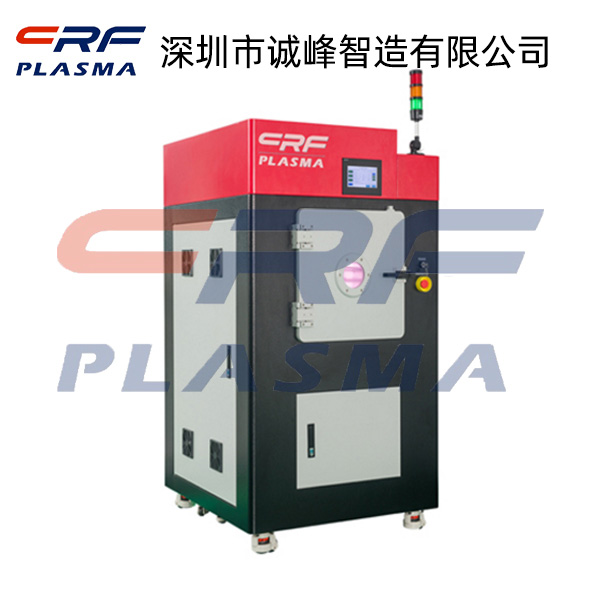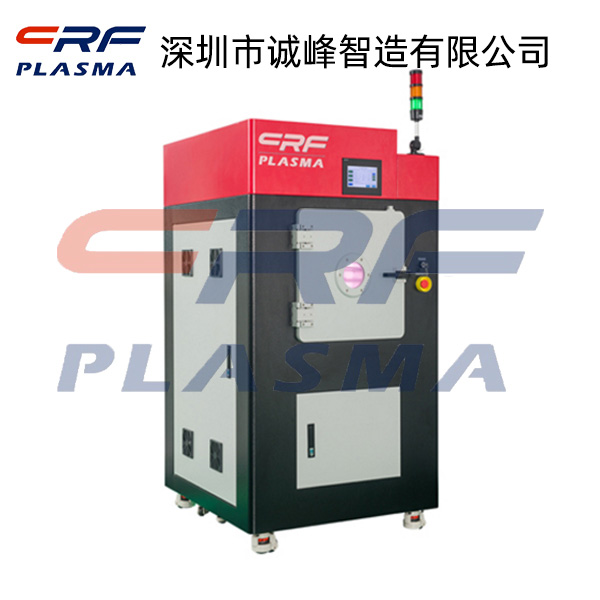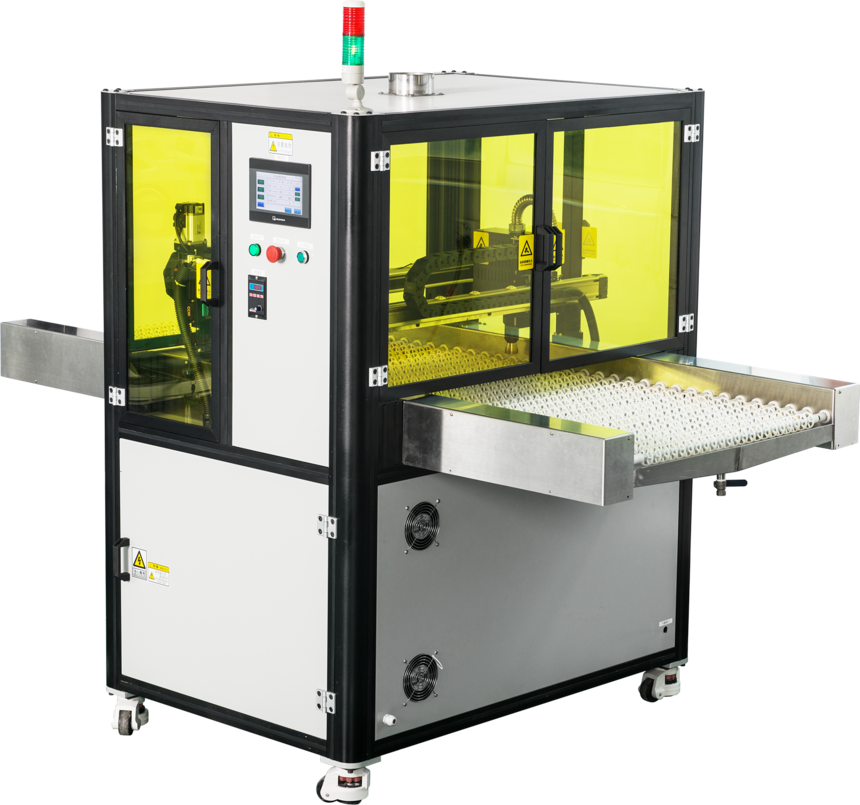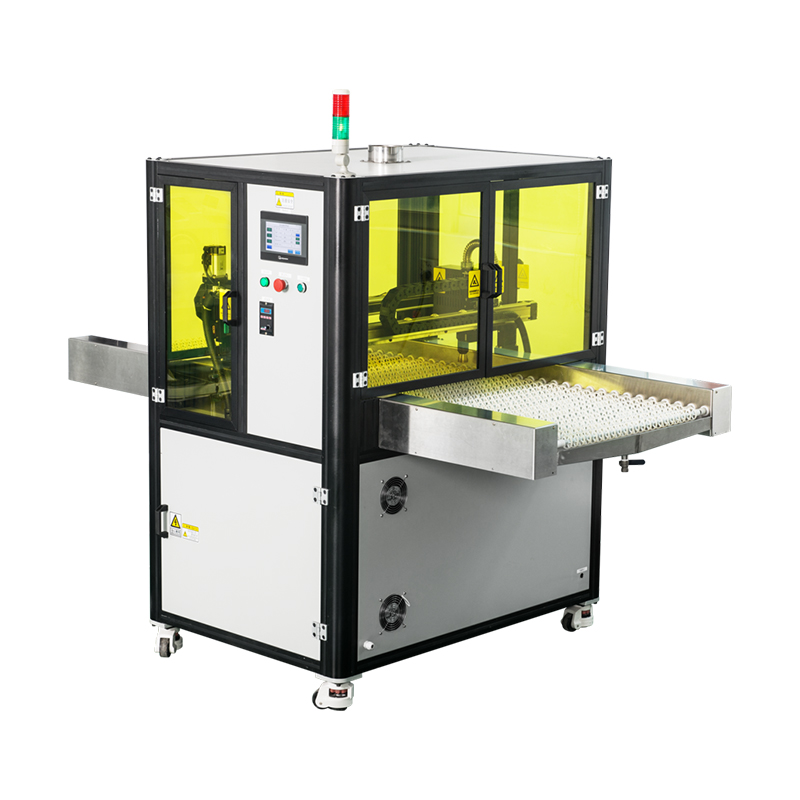
Welcome to Shenzhen Sing Fung Intelligent Manufacturing Co., Ltd.
E-mail:shaobo@sfi-crf.com
Plasma technology to modify the hydrophilicity of wool in low-temperature plasma treatment process
- Categories:Technical Support
- Author:plasma cleaning machine-surface treatment equipment-CRF plasma machine-Sing Fung Intelligent Manufacturing
- Origin:
- Time of issue:2021-06-11
- Views:
(Summary description) The surface structure and surface physical and chemical properties of wool fibers are closely related to the printing performance of wool fabrics. The outer skin layer of the wool surface scales is rich in C21-based covalently bonded lipids, which makes the wool fibers have a hydrophobic surface, making it difficult for the printing paste to evenly wet, spread and penetrate. The secondary outer skin layer of the scales is rich in cystine, and the disulfide bonds of cystine are covalently cross-linked between the wool macromolecules to form a diffusion barrier for dye additives. Low temperature plasma treatment process Therefore, in order to obtain a printing effect with uniform block surface, clear pattern outline and high color yield, especially for digital inkjet printing of wool, the surface of wool fabric must be modified. The low-temperature plasma processing technology is a dry processing technology, which saves energy and has no environmental pollution. Compared with the wet treatment method, the low-temperature plasma technology can not only realize the effective modification of the surface of wool, but also has almost no influence on the body performance of the wool. Most of the past methods used low-pressure plasma technology, which is an intermittent processing method, which consumes a lot of energy and requires a vacuum system, and the production cost for industrial applications is high. Dielectric Barrier Discharges (DBD) atmospheric pressure plasma does not require a vacuum system, and can realize continuous production with low cost and high efficiency. Industrialized application prospects are broad. Plasma treatment modifies the surface of wool fabrics and improves the performance of digital printing on wool fabrics. The non-plasma-treated wool fiber has complete scales, smooth surface and sharp edges and corners. Cracks and dot-like deposits appeared on the surface of wool fibers treated by the low-temperature plasma treatment process, and the edges of the scales became blurred. With the prolongation of the treatment time, the fibrous scaly layer peeled off, and even apparently fell off. The reason may be that during the plasma treatment process, the bombardment of the active particles on the surface of the fiber produces an etching effect, which leads to the degradation of some macromolecular substances (lipids and proteins) on the surface of the wool fiber. Low-molecular gas or fragments; after degradation, the part with larger molecular mass may contain active free radicals, which may react with the macromolecules on the surface of the fiber, and eventually be dispersed and deposited on the surface of the wool fiber. The surface of wool fiber contains components such as CC, NC, OC, O=C and O=C-OH. After atmospheric pressure plasma treatment, the content of CC and NC decreases significantly, while O=C- The OH content increased more. This is because there are lipids with higher carbon content and a small amount of protein on the surface of wool fibers. The etching effect of high-energy particles in the plasma on the surface of wool causes some of the CC and amide bonds in the wool to be broken and converted into other small molecules. The substance may then be oxidized to carbon-containing polar groups, such as carboxyl groups, etc., thereby improving the hydrophilicity of the fabric. The wettability of untreated wool fabrics is poor, mainly due to the lipids contained in the flakes on the surface of the wool, which give the wool fibers a certain degree of hydrophobicity. After the low-temperature plasma treatment process, the high-energy particles have an etching effect on the surface of the wool, so that the flake layer of the wool is destroyed, and the lipid substance on the surface is modified or removed. After atmospheric pressure plasma treatment, the surface of the wool fabric introduces oxygen-containing polar groups, such as carboxyl groups, etc., so the water contact angle of the fabric is reduced, the wetting time is shortened, and the wool fabric is wetted Performance has been significantly improved. After the low-temperature plasma treatment process, the whiteness of the wool fabric remains basically unchanged, the breaking strength is obviously improved, and the breaking elongation is reduced. This is because the cortical layer in the wool fiber determines the strength of the fiber, and the plasma only produces etching and oxidative degradation on the surface layer of the scales, and does not damage the wool fiber body; on the other hand, the etching effect of the plasma will cause Micro cracks appear on the fiber surface, making the surface uneven, thereby increasing the surface roughness of the fiber, increasing the cohesive force between the yarns, resulting in an increase in the strength of the fabric and a decrease in the elongation at break. The smaller the value of stiffness, smoothness and softness, th
Plasma technology to modify the hydrophilicity of wool in low-temperature plasma treatment process
(Summary description) The surface structure and surface physical and chemical properties of wool fibers are closely related to the printing performance of wool fabrics. The outer skin layer of the wool surface scales is rich in C21-based covalently bonded lipids, which makes the wool fibers have a hydrophobic surface, making it difficult for the printing paste to evenly wet, spread and penetrate. The secondary outer skin layer of the scales is rich in cystine, and the disulfide bonds of cystine are covalently cross-linked between the wool macromolecules to form a diffusion barrier for dye additives.
Low temperature plasma treatment process
Therefore, in order to obtain a printing effect with uniform block surface, clear pattern outline and high color yield, especially for digital inkjet printing of wool, the surface of wool fabric must be modified. The low-temperature plasma processing technology is a dry processing technology, which saves energy and has no environmental pollution. Compared with the wet treatment method, the low-temperature plasma technology can not only realize the effective modification of the surface of wool, but also has almost no influence on the body performance of the wool.
Most of the past methods used low-pressure plasma technology, which is an intermittent processing method, which consumes a lot of energy and requires a vacuum system, and the production cost for industrial applications is high. Dielectric Barrier Discharges (DBD) atmospheric pressure plasma does not require a vacuum system, and can realize continuous production with low cost and high efficiency. Industrialized application prospects are broad.
Plasma treatment modifies the surface of wool fabrics and improves the performance of digital printing on wool fabrics. The non-plasma-treated wool fiber has complete scales, smooth surface and sharp edges and corners. Cracks and dot-like deposits appeared on the surface of wool fibers treated by the low-temperature plasma treatment process, and the edges of the scales became blurred. With the prolongation of the treatment time, the fibrous scaly layer peeled off, and even apparently fell off.
The reason may be that during the plasma treatment process, the bombardment of the active particles on the surface of the fiber produces an etching effect, which leads to the degradation of some macromolecular substances (lipids and proteins) on the surface of the wool fiber. Low-molecular gas or fragments; after degradation, the part with larger molecular mass may contain active free radicals, which may react with the macromolecules on the surface of the fiber, and eventually be dispersed and deposited on the surface of the wool fiber.
The surface of wool fiber contains components such as CC, NC, OC, O=C and O=C-OH. After atmospheric pressure plasma treatment, the content of CC and NC decreases significantly, while O=C- The OH content increased more. This is because there are lipids with higher carbon content and a small amount of protein on the surface of wool fibers. The etching effect of high-energy particles in the plasma on the surface of wool causes some of the CC and amide bonds in the wool to be broken and converted into other small molecules. The substance may then be oxidized to carbon-containing polar groups, such as carboxyl groups, etc., thereby improving the hydrophilicity of the fabric.
The wettability of untreated wool fabrics is poor, mainly due to the lipids contained in the flakes on the surface of the wool, which give the wool fibers a certain degree of hydrophobicity. After the low-temperature plasma treatment process, the high-energy particles have an etching effect on the surface of the wool, so that the flake layer of the wool is destroyed, and the lipid substance on the surface is modified or removed.
After atmospheric pressure plasma treatment, the surface of the wool fabric introduces oxygen-containing polar groups, such as carboxyl groups, etc., so the water contact angle of the fabric is reduced, the wetting time is shortened, and the wool fabric is wetted Performance has been significantly improved. After the low-temperature plasma treatment process, the whiteness of the wool fabric remains basically unchanged, the breaking strength is obviously improved, and the breaking elongation is reduced. This is because the cortical layer in the wool fiber determines the strength of the fiber, and the plasma only produces etching and oxidative degradation on the surface layer of the scales, and does not damage the wool fiber body; on the other hand, the etching effect of the plasma will cause Micro cracks appear on the fiber surface, making the surface uneven, thereby increasing the surface roughness of the fiber, increasing the cohesive force between the yarns, resulting in an increase in the strength of the fabric and a decrease in the elongation at break.
The smaller the value of stiffness, smoothness and softness, th
- Categories:Technical Support
- Author:plasma cleaning machine-surface treatment equipment-CRF plasma machine-Sing Fung Intelligent Manufacturing
- Origin:
- Time of issue:2021-06-11 18:05
- Views:
The surface structure and surface physical and chemical properties of wool fibers are closely related to the printing performance of wool fabrics. The outer skin layer of the wool surface scales is rich in C21-based covalently bonded lipids, which makes the wool fibers have a hydrophobic surface, making it difficult for the printing paste to evenly wet, spread and penetrate. The secondary outer skin layer of the scales is rich in cystine, and the disulfide bonds of cystine are covalently cross-linked between the wool macromolecules to form a diffusion barrier for dye additives.

Low temperature plasma treatment process
Therefore, in order to obtain a printing effect with uniform block surface, clear pattern outline and high color yield, especially for digital inkjet printing of wool, the surface of wool fabric must be modified. The low-temperature plasma processing technology is a dry processing technology, which saves energy and has no environmental pollution. Compared with the wet treatment method, the low-temperature plasma technology can not only realize the effective modification of the surface of wool, but also has almost no influence on the body performance of the wool.
Most of the past methods used low-pressure plasma technology, which is an intermittent processing method, which consumes a lot of energy and requires a vacuum system, and the production cost for industrial applications is high. Dielectric Barrier Discharges (DBD) atmospheric pressure plasma does not require a vacuum system, and can realize continuous production with low cost and high efficiency. Industrialized application prospects are broad.
Plasma treatment modifies the surface of wool fabrics and improves the performance of digital printing on wool fabrics. The non-plasma-treated wool fiber has complete scales, smooth surface and sharp edges and corners. Cracks and dot-like deposits appeared on the surface of wool fibers treated by the low-temperature plasma treatment process, and the edges of the scales became blurred. With the prolongation of the treatment time, the fibrous scaly layer peeled off, and even apparently fell off.
The reason may be that during the plasma treatment process, the bombardment of the active particles on the surface of the fiber produces an etching effect, which leads to the degradation of some macromolecular substances (lipids and proteins) on the surface of the wool fiber. Low-molecular gas or fragments; after degradation, the part with larger molecular mass may contain active free radicals, which may react with the macromolecules on the surface of the fiber, and eventually be dispersed and deposited on the surface of the wool fiber.
The surface of wool fiber contains components such as CC, NC, OC, O=C and O=C-OH. After atmospheric pressure plasma treatment, the content of CC and NC decreases significantly, while O=C- The OH content increased more. This is because there are lipids with higher carbon content and a small amount of protein on the surface of wool fibers. The etching effect of high-energy particles in the plasma on the surface of wool causes some of the CC and amide bonds in the wool to be broken and converted into other small molecules. The substance may then be oxidized to carbon-containing polar groups, such as carboxyl groups, etc., thereby improving the hydrophilicity of the fabric.
The wettability of untreated wool fabrics is poor, mainly due to the lipids contained in the flakes on the surface of the wool, which give the wool fibers a certain degree of hydrophobicity. After the low-temperature plasma treatment process, the high-energy particles have an etching effect on the surface of the wool, so that the flake layer of the wool is destroyed, and the lipid substance on the surface is modified or removed.
After atmospheric pressure plasma treatment, the surface of the wool fabric introduces oxygen-containing polar groups, such as carboxyl groups, etc., so the water contact angle of the fabric is reduced, the wetting time is shortened, and the wool fabric is wetted Performance has been significantly improved. After the low-temperature plasma treatment process, the whiteness of the wool fabric remains basically unchanged, the breaking strength is obviously improved, and the breaking elongation is reduced. This is because the cortical layer in the wool fiber determines the strength of the fiber, and the plasma only produces etching and oxidative degradation on the surface layer of the scales, and does not damage the wool fiber body; on the other hand, the etching effect of the plasma will cause Micro cracks appear on the fiber surface, making the surface uneven, thereby increasing the surface roughness of the fiber, increasing the cohesive force between the yarns, resulting in an increase in the strength of the fabric and a decrease in the elongation at break.
The smaller the value of stiffness, smoothness and softness, the better the fabric feel; the load-displacement curve is a comprehensive reflection of the properties of fabric stretching, bending, shearing and friction, and the larger the area value Larger, the macro performance is the worse the fabric feel.
After the wool fabric is treated with low-temperature plasma, the surface of the fiber is etched, and part of the scale layer is peeled off, which roughens the surface of the fiber and improves the adhesion; and the part with larger molecular weight that is degraded With active free radicals, it may cross-link with macromolecules or free radicals on the surface of adjacent fibers to form a cross-linked layer, resulting in intertwined entanglement between adjacent fibers and tight tissue structure, so the fabric surface is rough.
The K/S value of the wool fabric after plasma treatment has been improved to varying degrees, among which the K/S value of reactive black printed fabric has increased by nearly 77%, and the K/S value of reactive magenta printed fabric has increased Around 43%. This is because after plasma treatment of the wool fabric, the scales on the surface of the wool fiber are peeled off, and the hydrophilicity of the fabric is improved, which is more conducive to dyeing the fiber.
Scan the QR code to read on your phone

TEL:0755-3367 3020 / 0755-3367 3019

E-mail:sales-sfi@sfi-crf.com

ADD:Mabao Industrial Zone, Huangpu, Baoan District, Shenzhen

















